Broadleaf Carpetgrass – Is It the Right Grass for You?
This perennial warm-season grass is an appealing choice for homeowners in tropical parts of Australia – especially northern Queensland. With excellent shade but poor drought ...

Drought-tolerant grasses have characteristics that allow the lawn to stay alive and green for a long period of time under drought conditions and heavy water restrictions. Many drought-tolerant grasses can survive and even maintain a green colour.
Behind a lawn’s drought tolerance are characteristics of an efficient root system, above or below the ground, that repairs bare or damaged grass.
Many drought-resistant grasses also can go dormant during harsh conditions but are able to recover when water can be re-applied.
Ideal drought-tolerant grasses are:
Zoysia grasses are more drought-tolerant and water-efficient than the Couch, Kikuyu and Buffalo varieties. This is largely due to their ability to go dormant for up to five weeks during drought conditions without dying, as their deep rhizomes can self-repair drought damaged or bare lawn.
Zoysia grass, such as Empire or Nara Native, would be the most drought tolerant grass needing only about 2.5cm of water weekly to maintain a green colour.
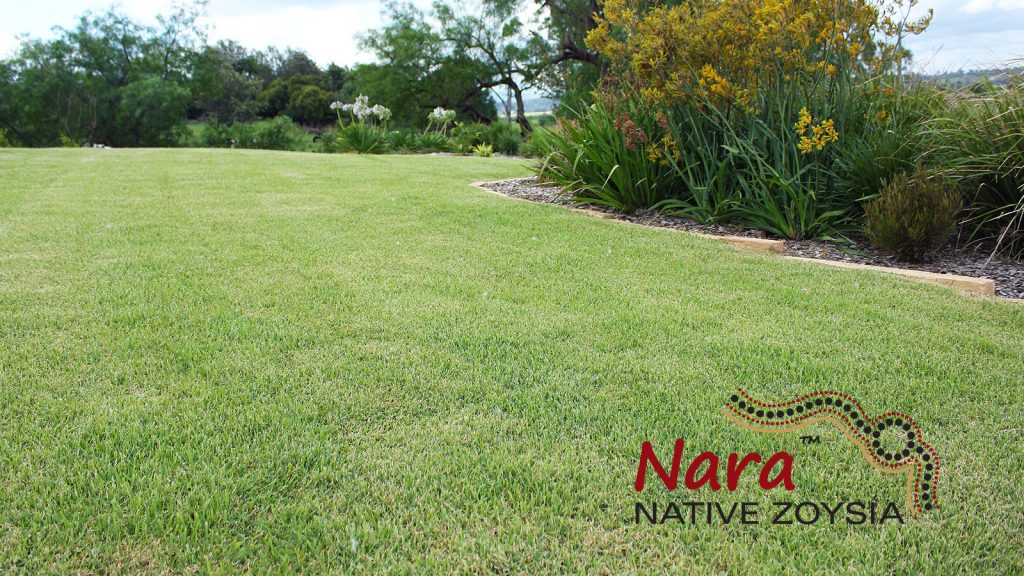 Nara Native™ is one of the highest drought-tolerant Zoysias on the market that doesn’t sacrifice looks or softness under tough conditions.
Nara Native™ is one of the highest drought-tolerant Zoysias on the market that doesn’t sacrifice looks or softness under tough conditions.
A very deep-rooted system allows Nara Native to be water efficient and drought tolerant.
Watering of Native Nara should occur infrequently but deeply and early in the morning.
Nara Native turf can be found in the Northern Territory, Queensland, New South Wales, Victoria and Western Australia. Your local Nara Grower suppliers can easily be found with our online supplier locator tool.
Price wise and for a low maintenance Zoysia, Nara costs between $11 and $16 per square metre. To get more Nara Zoysia pricing info, visit our Nara Zoysia™ info page and get 3 quotes from your local growers today.
 Empire Zoysia™ is another excellent choice for regions where water restrictions are frequent and long dry periods prevail.
Empire Zoysia™ is another excellent choice for regions where water restrictions are frequent and long dry periods prevail.
It is Empire Zoysia’s long thick stolons which seek out soil moisture that give it the ability to survive in low rainfall areas.
During drought conditions, you only need to water your Empire Zoysia when you notice leaf wilting.
Water your Empire Zoysia infrequently and deeply early in the morning.
Empire Zoysia can be grown in Queensland, New South Wales, ACT, Victoria, South Australia, Western Australia and the Northern Territory. Your local Empire Grower suppliers can easily be found with our online supplier locator tool.
Price-wise – Empire Zoysia is one of the most affordable high-quality lawns on the market, retailing between $12 and $16 per square metre. To get more Empire Zoysia pricing info, visit our Empire Zoysia™ info page and get 3 quotes from your local Empire growers today.
Couch turf is another good choice for drought tolerance and those under water restrictions, remaining green for a long period of time in harsh conditions. It is Couch’s robust deep-rooted system that allows it to recover easily if the lawn dies-off due to heat and lack of water.
Couches such as OZTUFF® and Stadium Sports® are also some of the first grass varieties to recover from drought conditions.
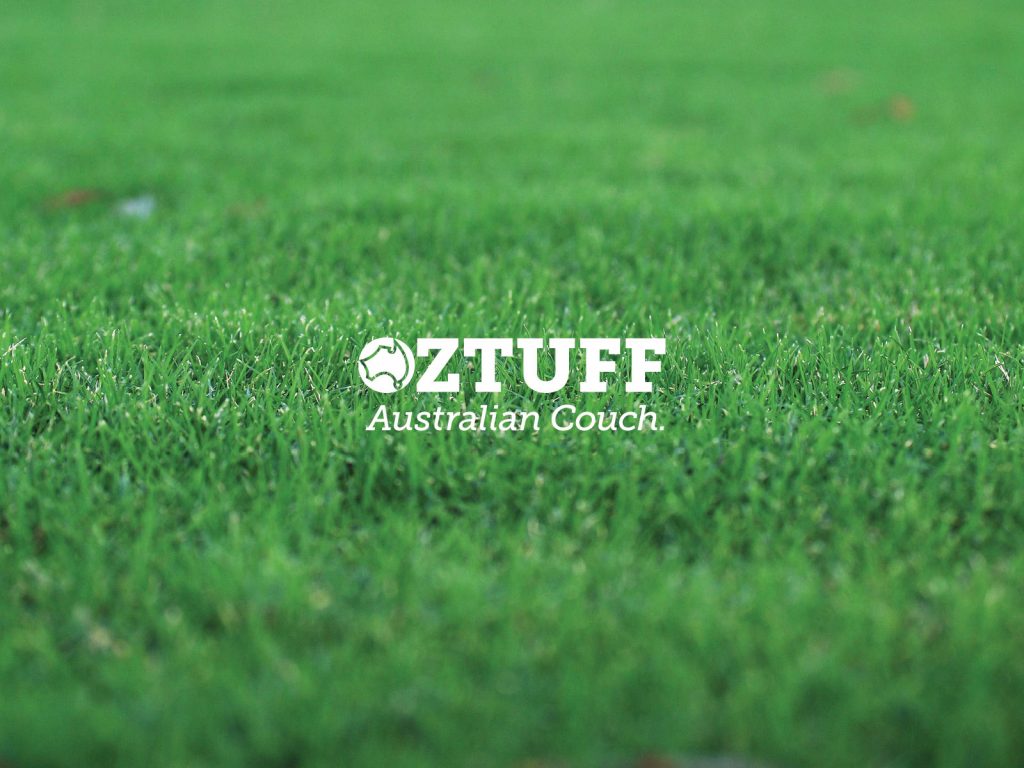 OZTUFF® Couch is an excellent option if you want a grass that stays green and recovers rapidly following drought conditions.
OZTUFF® Couch is an excellent option if you want a grass that stays green and recovers rapidly following drought conditions.
Oztuff’s deep-rooted system also makes it an ideal choice for regions prone to water restrictions.
Watering of Oztuff Couch should occur when you notice the lawn browning off.
Infrequent deep watering of your Oztuff Couch is recommended early in the morning.
OZTUFF Couch turf can be found in Queensland and New South Wales. Your local grower suppliers can easily be found with our online supplier locator tool.
Price-wise and for a low maintenance Couch, OZTUFF costs between $8 and $10 per square metre. To get more OzTuff pricing info, visit our OZTUFF information page and get 3 quotes from your local growers today.
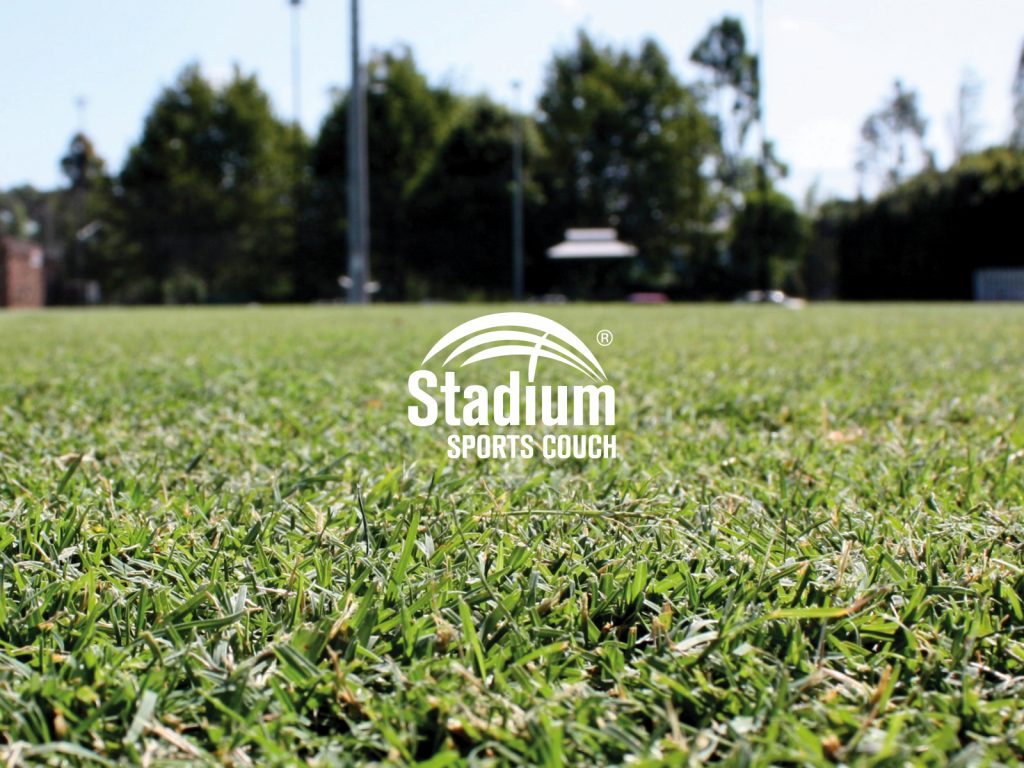 Another drought-tolerant Couch on the market is Stadium® Sports Couch.
Another drought-tolerant Couch on the market is Stadium® Sports Couch.
During drought conditions, Stadium Sports is supported through large underground runners that give it vigorous survival characteristics.
Stadium Sports Couch’s deep-rooted system means you only need to water when you notice wilting.
Stadium Sports Couch can be infrequently, deep watered early in the morning.
Stadium turf can be found in Queensland and New South Wales. Your local Grower suppliers can easily be found with our online supplier locator tool.
Price wise and for a low maintenance Couch, Stadium costs between $8 and $10 per square metre. To get more Stadium Couch pricing info, visit our Stadium® Sports Couch info page and get 3 quotes from your local growers today.
IronCutter® is a more aesthetic, less thatching and lower maintenance grass than many of the current Bermudagrasses on the Australian market. IronCutter® is known for its deepest green colour and early spring green-up.
It’s able to withstand harsh cold climates while also being able to withstand warmer conditions within drought-prone areas.
IronCutter® also features a vigorous growth habit, so it has an excellent wear tolerance and recovery and is able to withstand high volumes of traffic. It also holds an excellent winter colour with a fine leaf texture, creating a lush, manicured look.
IronCutter® can be found in Queensland, Victoria and South Australia. Your local Grower suppliers can easily be found with our online locator tool.
IronCutter® costs between $12 and $18 per square metre.
Kikuyu turf has high drought tolerance due to its large prostrate runners and rapid growth rate. Kikuyu’s large prostrate runners also mean it grows deep into the soil seeking moisture for growth and survival.
Kenda Kikuyu breeds such as Kenda Kikuyu® are sterile varieties, meaning they don’t spread as much and don’t contain many seeds – good for those with allergies.
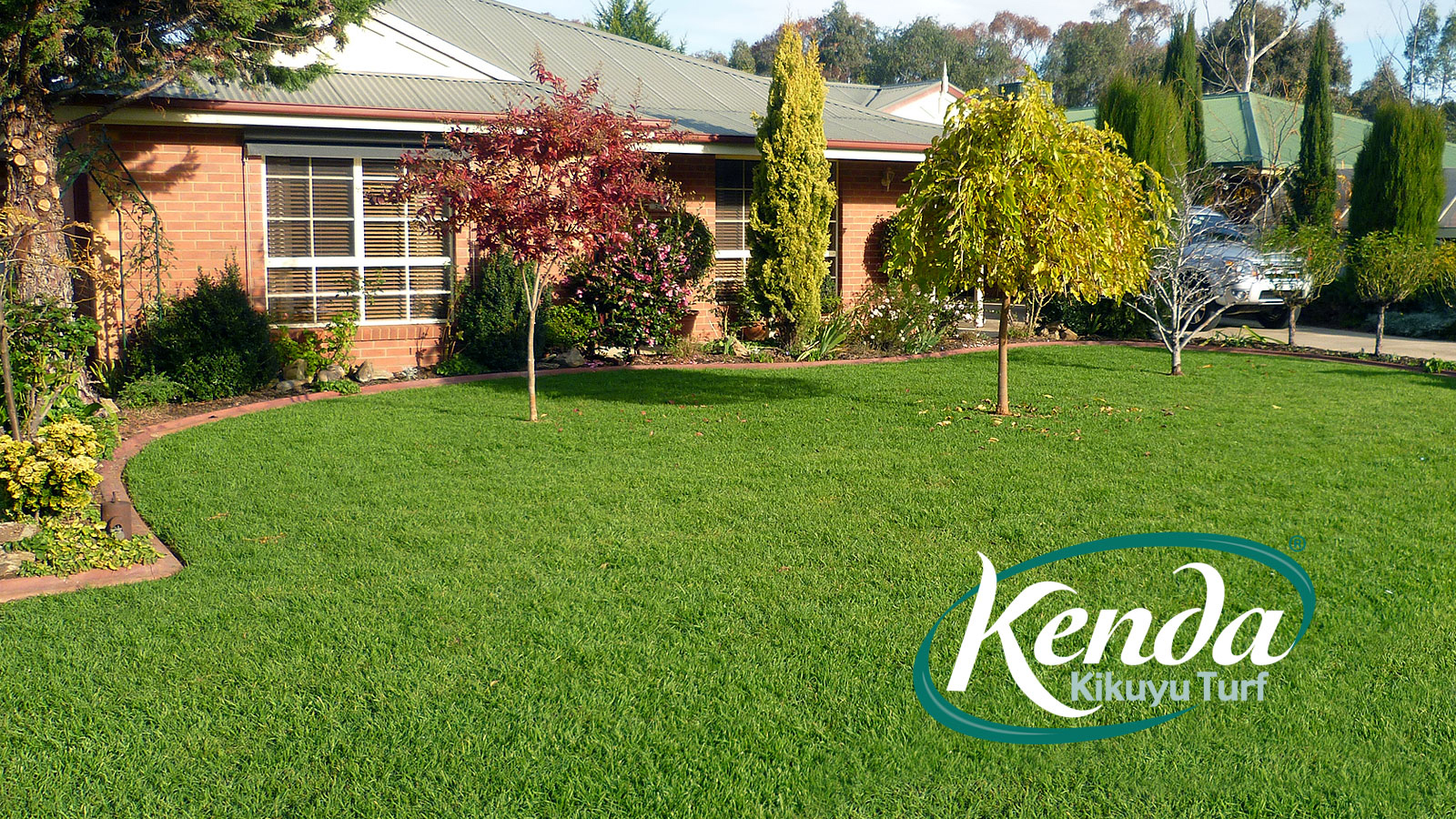
Kenda® Kikuyu is an excellent drought-tolerant Kikuyu turf suited to low rainfall regions where water restrictions are enforced.
Kenda Kikuyu’s large prostrate runners and excellent growth rate allow it to recover efficiently from drought conditions.
To maintain Kenda’s hardiness mow every 7-10 days during hot months and every 3-6 weeks during cooler months.
Deepwater your Kikuyu Kenda, when you notice the grass wilting, every 7-10 days and early in the morning between 7am and 10am.
Kenda Kikuyu can be found in Queensland, New South Wales, the ACT, Victoria, South Australia and Western Australia. Your local grower suppliers can easily be found with our online supplier locator tool.
Price wise – Kenda Kikuyu is also one of the most reasonably priced grasses between $7 and $10 per square metre. To get more Kenda Kikuyu pricing info, visit our Kenda Kikuyu® info page and get 3 quotes from your local growers today.
Buffalo grasses, such as Prestige®, Sapphire Soft Leaf® or Palmetto®, all have above-ground stems called stolons as well as a deep root system that helps repair drought-affected lawns. If drought conditions do prevail, Buffalo grass will require some watering to survive.
For those wanting cool-season grasses, the shade-tolerant varieties are Fine and Tall Fescues.
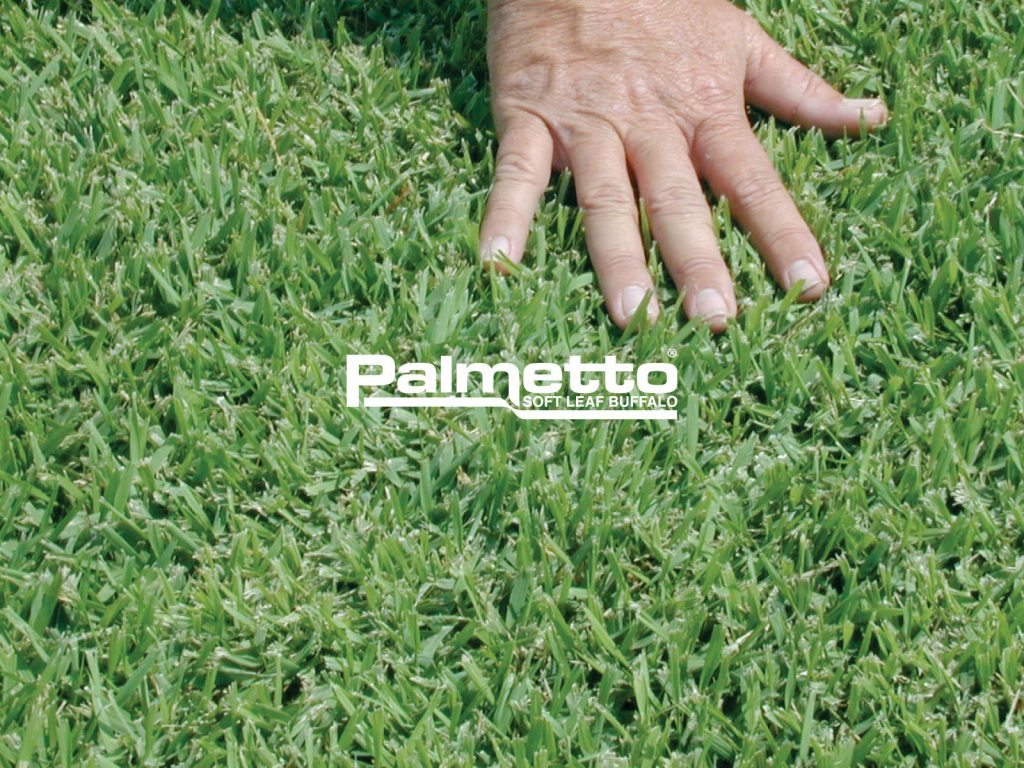
Buffalo grasses are the most shade tolerant varieties on the Australian market. Under the banner of Buffalo Turf’s, there are a plethora of different varieties.
Palmetto Buffalo® is one of these varieties. Sporting a large deep-rooted system that allows it to be one of the more water efficient turf types on the market.
Established Palmetto only needs watering when you notice wilting leaf blades.
During drought conditions deep water your Palmetto Buffalo every 7-10 days early in the morning – between 7 am and 10 am.
Palmetto grass can be found from Queensland down to Victoria and across in Western Australia. Your local Grower suppliers can easily be found with our online supplier locator tool.
To find suppliers of Palmetto grass near where you live go to Find a Turf Supplier.
Price wise and for a low maintenance lawn, Palmetto grass costs between $10 and $15 per square metre. To get more Palmetto Buffalo pricing info, visit our Palmetto Buffalo info page and get 3 quotes from your local Palmetto growers today.
Sapphire Buffalo®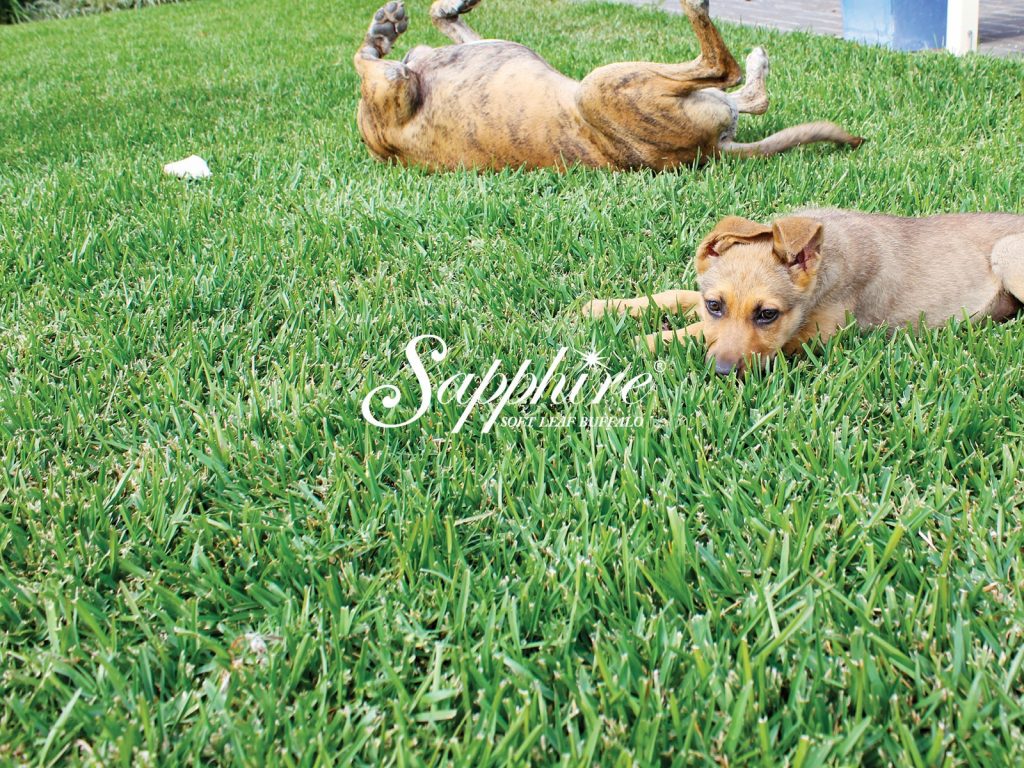 does tolerate drought conditions but once you see your grass wilting water accordingly.
does tolerate drought conditions but once you see your grass wilting water accordingly.
Infrequent deep water is preferred for Sapphire Soft Leaf Buffalo and early in the morning when less water loss occurs.
Prestige Buffalo’s deep-rooted system means it is an efficient water user that can also maintain its green colour for longer during drought conditions.
If long drought conditions prevail don’t let your Prestige Buffalo brown-off for longer than a week otherwise it will take longer to recover.
Water your Prestige Buffalo deeply every 7-10 days during drought conditions.
Sapphire Buffalo can be grown in Queensland, New South Wales, Victoria, South Australia and Tasmania. Your local Grower suppliers can easily be found with our online supplier locator tool.
Price-wise – As one of the newest Buffalo’s on the market, Sapphire Turf is reasonably priced to afford you a good-looking lawn between $10 to $15 per metre square. To get more Sapphire Buffalo pricing info, visit our Sapphire Buffalo info page and get 3 quotes from your local Sapphire growers today.
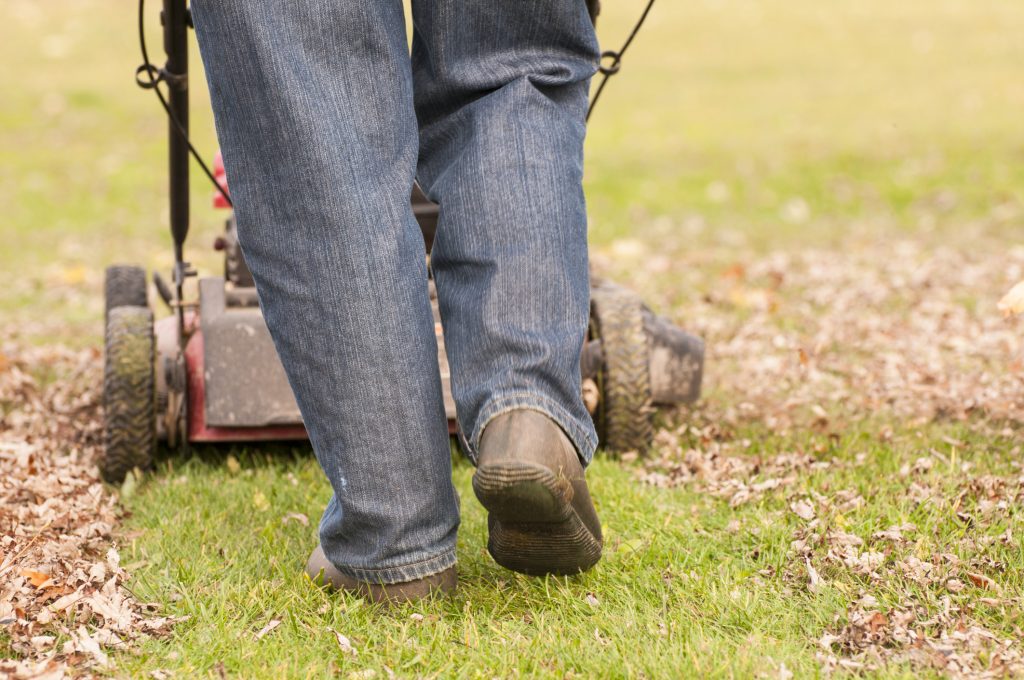 Obviously mowing during drought conditions will vary depending on how much water you can apply to your lawn.
Obviously mowing during drought conditions will vary depending on how much water you can apply to your lawn.
The main point is to not mow your lawn too low during prevailing dry conditions.
For Zoysia grasses mow every 3 to 4 weeks to a height of between 35mm to 45mm.
Couch grasses should be mown to no more than 50mm every 7-10 days.
Kikuyu grasses, during drought conditions, should only be mown to a height of 20mm to 50mm.
Drought tolerant Buffalo grasses can be mown every 7-10 days to a height of 45mm.
Water your drought-tolerant grass varieties only when you notice the lawn browning off or wilting.
Deep watering should occur early in the morning between 7 am and 10 am.
 The moment drought conditions first start arriving, and this can include when heavy water restrictions are put into place – is the same moment that it’s time to start preparing lawns for the greatest chances of ongoing health through these difficult times.
The moment drought conditions first start arriving, and this can include when heavy water restrictions are put into place – is the same moment that it’s time to start preparing lawns for the greatest chances of ongoing health through these difficult times.
Below are two of our recommended strategies you can apply to prepare and safeguard your lawns in times of drought.
Two strategies can be applied:
For more fast facts and Q&As on our varieties
Or check out our handy Quick Lawn Selection Guide.